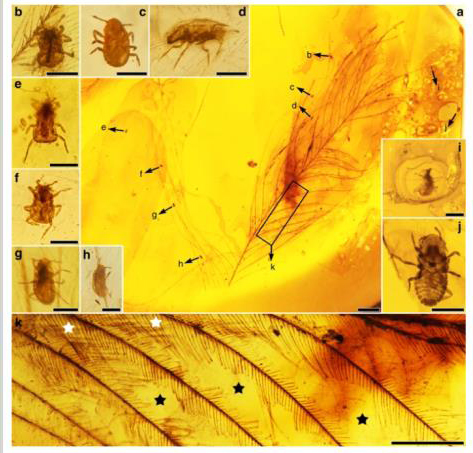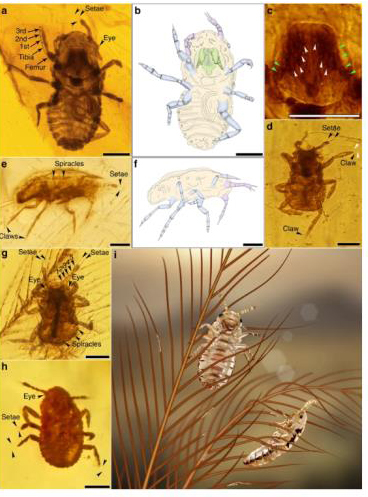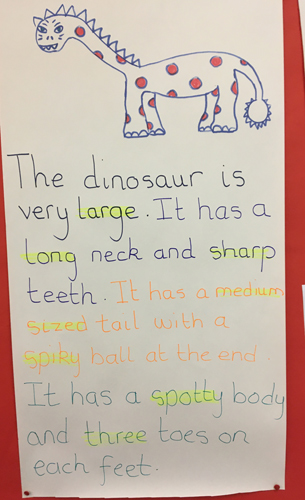Lice Feeding on Dinosaur Feathers Entombed in Amber
Ancient Lice Fed on Dinosaur Feathers
With the evolution of modified scales into feathers, it was very likely that feather-feeding invertebrates would evolve to exploit this new food source. However, the lack of fossils prevents palaeontologists from being able to plot how feather-feeding behaviours evolved. However, damaged dinosaur down, complete with several lice-like insects preserved in 100-million-year-old amber confirms that by the Early Cretaceous, feathered dinosaurs had parasites that specialised on feeding upon their integumentary systems.
Feathered Dinosaurs Had Parasites
Writing in the on-line, academic journal “Nature Communications”, a team of scientists, including researchers from the Russian Academy of Sciences, the Smithsonian Institute and the Chinese Academy of Sciences, describe the discovery of ten nymph specimens, a new lineage of insect preserved alongside the dinosaur downy feathers they were feeding upon in amber from northern Myanmar.
The new insect species has been named Mesophthirus engeli. The specific name “engeli” is dedicated to Dr Michael S. Engel, for his outstanding contribution to entomological research.
Parasitic Nymphs Feeding on Dinosaur Feathers
Picture credit: Nature Communications
The photograph (above), shows an amber nodule with the specimens of the newly described parasitic insect Mesophthirus engeli preserved in situ. Photograph (a), shows the whole feather and the locations of the insects. White stars indicate parts of the feather with relatively complete barbules, whilst the black stars indicate areas that show probable feeding damage. Scale bars (a) = 1 mm, 100 µm (b-j) and (k) 0.5 mm.
Ectoparasitic Morphological Characters
The nymphs demonstrate a series of ectoparasitic morphological traits such as a small, wingless body, a relatively large head with strong mouth parts and robust, short antennae. These insects preserved in association with partially damaged dinosaur feathers, the damage probably caused by their feeding behaviour, suggests that feather-feeding insects originated in the Cretaceous, accompanying the radiation of the feathered dinosaurs, including the early birds.
Magnified Views of Mesophthirus engeli Along with Line Drawings and Life Reconstruction
Picture credit: Nature Communications
The picture (above), shows magnified views of the M. engeli specimens (a, c, d, e, g and h), with accompanying line drawings (b and f) and a life reconstruction (i). Scale bars equal 50 μm. The colour of the insects in the life reconstruction (i) are conjectural and reflect the general colouring of living feather-feeding lice.
To read a related article about the remains of blood-sucking mites being found preserved in burmite (amber from Myanmar): A Blood-sucking Story – Dinosaur Parasites Preserved in Amber.
The scientific paper: “New insects feeding on dinosaur feathers in mid-Cretaceous amber” by Taiping Gao, Xiangchu Yin, Chungkun Shih, Alexandr P. Rasnitsyn, Xing Xu, Sha Chen, Chen Wang and Dong Ren published in Nature Communications.
The Everything Dinosaur website: Everything Dinosaur.




